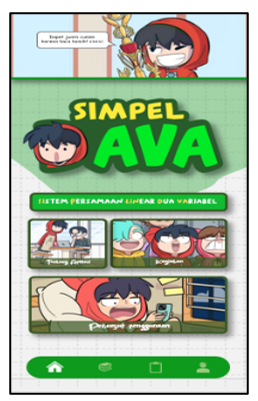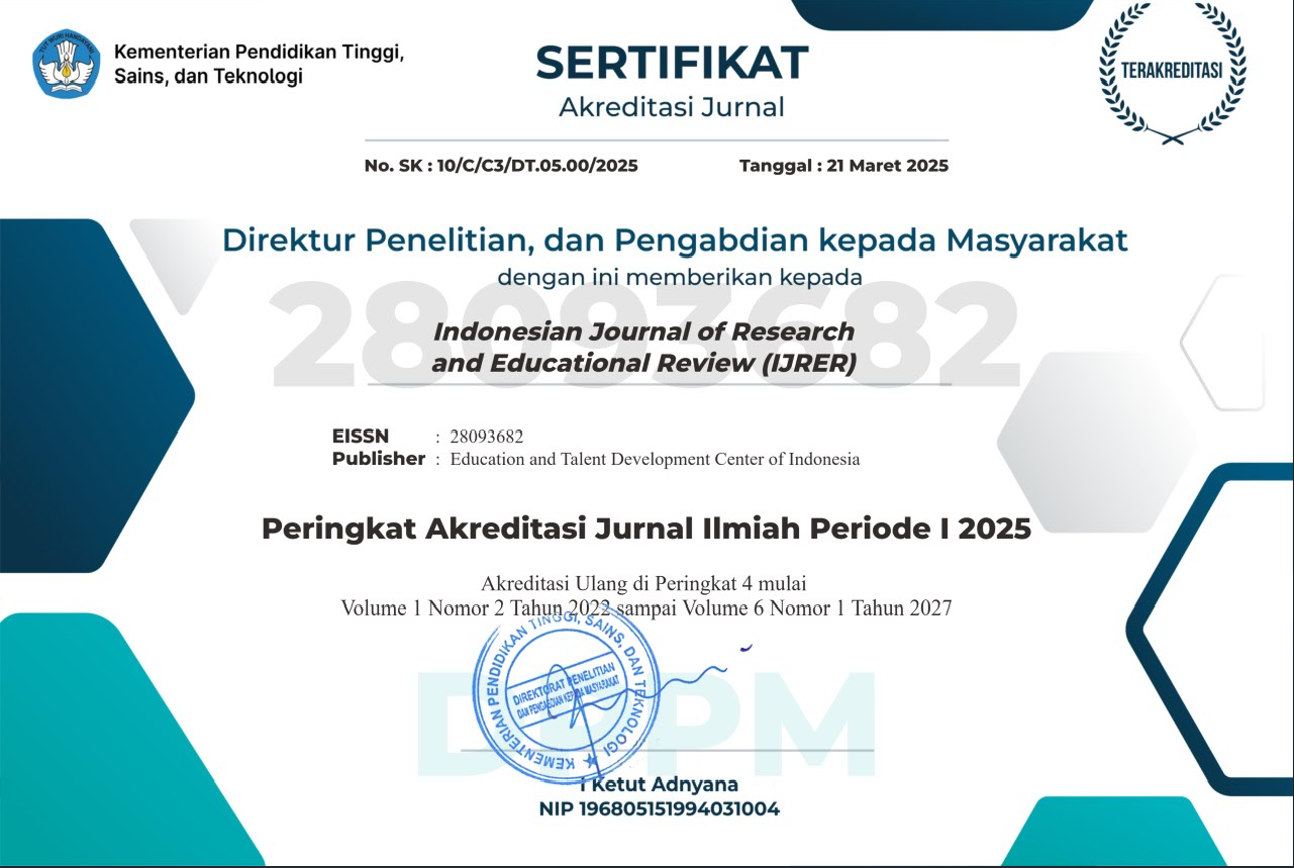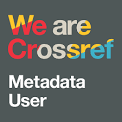Development of Learning Media at Junior High School: Comic Reading Applications Using Software Ispring Suite
DOI:
https://doi.org/10.51574/ijrer.v4i4.3624Keywords:
Comic Applications, Learning Media, Junior High School, Plomp, Software Ispring SuiteAbstract
The background research was conducted as an effort to overcome students' low interest and understanding of mathematics due to the monotonous learning approach. Therefore, this study aims to develop a mathematics learning media application in the form of comics that focuses on the material of linear equations with two variables, specifically designed for eighth-grade junior high school students. This research uses the Plomp development model, which includes the stages of initial investigation, design, realization/reconstruction, test, evaluation and revision, and implementation. This research was conducted at Junior High School 1 Bulango Timur. The data collection approach used in this research is a validation sheet and a questionnaire for students and teachers. Data analysis in this study used qualitative descriptive analysis. The results of validation by experts show that this media is valid, with the readability test obtaining a feasibility level of 97.27% and student responses reaching 99.2% (very practical). Teacher responses also showed practicality at 91.7%. This media is proven to increase student learning motivation, facilitate understanding of abstract concepts, and create captivating learning experiences, so it is feasible to be applied in learning mathematics on the material of the system of linear equations of two variables.
References
Abdullah, R. (2017). Pembelajaran Dalam Perspektif Kreativitas Guru Dalam Pemanfaatan Media Pembelajaran. Lantanida Journal, 4(1), 35. https://doi.org/10.22373/lj.v4i1.1866
Anugrah, D., Ma'rufi, M. R., & Hidayat, R. (2023). Mathematical representation ability of students with moderate visual spatial intelligence in solving solid figure problems. Mathline: Jurnal Matematika Dan Pendidikan Matematika, 8(2), 677-690. https://doi.org/10.31943/mathline.v8i2.433
Apsari, P. N., & Rizky, S. (2018). Media Pembelajaran Matematika Berbasis Android Pada Materi Program Linear. Journal of the Society of Mechanical Engineers, 121(1191), 47. https://doi.org/10.1299/jsmemag.121.1191_47
Ariska, M. D., Darmadi, D., & Murtafiâ, W. (2018). Pengembangan media pembelajaran menggnakan adobe flash berbasis metakognisi untuk meningkatkan motivasi belajar matematika. Edumatica: Jurnal Pendidikan Matematika, 8(1), 83-97. https://doi.org/10.22437/edumatica.v8i01.4622
Beswick, K., & Fraser, S. (2019). Developing mathematics teachers’ 21st century competence for teaching in STEM contexts. ZDM, 51(6), 955-965. https://doi.org/10.1007/s11858-019-01084-2
Boaler, J. (2022). Mathematical mindsets: Unleashing students' potential through creative mathematics, inspiring messages and innovative teaching. John Wiley & Sons.
Cavas, B., & Cavas, P. (2020). Multiple intelligences theory—Howard Gardner. In Science education in theory and practice: An introductory guide to learning theory (pp. 405-418). Cham: Springer International Publishing. https://doi.org/10.1007/978-3-030-43620-9_27
Djamarah, syaiful bahri, & Zain, A. (2013). Strategi Belajar Mengajar. Rineka Cipta.
Dung, B. X. (2021). Higher education and improving the quality of human resources today. European Journal of Human Resource Management Studies, 5(2). https://oapub.org/soc/index.php/EJHRMS/article/view/1056
Escarez Jr, Y. F. D., & Ching, D. A. (2022). Math anxiety and mathematical representations of Grade 7 students. International Journal of Educational Management and Development Studies, 3(1), 166-181.
Fadilah, A., Nurzakiyah, K. R., Kanya, N. A., Hidayat, S. P., & Setiawan, U. (2023). Pengertian media, tujuan, fungsi, manfaat dan urgensi media pembelajaran. Journal of Student Research, 1(2), 01-17. https://doi.org/10.55606/jsr.v1i2.938
Fatah, A. H., & Risfina, A. M. (2023). Teori Pemrosesan Informasi dan Implikasinya Dalam Pembelajaran. Jurnal Ilmiah Mandala Education, 9(3), 1632–1641. https://doi.org/10.58258/jime.v9i3.5256
Ferdiansyah, H., Haling, A., & Nurhikmah H. (2021). Pengembangan Multimedia Interaktif dalam Pembelajaran Simulasi dan Komunikasi Digital. Indonesian Journal of Learning Education and Counseling, 3(2), 148–155. https://doi.org/10.31960/ijolec.v3i2.879
Firdha, N., & Zulyusri, Z. (2022). Penggunaan iSpring Dalam Pengembangan Media Pembelajaran Interaktif. Diklabio: Jurnal Pendidikan dan Pembelajaran Biologi, 6(1), 101–106. https://doi.org/10.33369/diklabio.6.1.101-106
Fitriyani, A., & Pradipta, T. R. (2025). Analysis of Students' Numeracy Literacy Ability in Solving Three Variable Linear Equation System (SPLTV) Problems Based on Learning Styles. Jurnal Paedagogy, 12(3), 866-875. https://doi.org/10.33394/jp.v12i3.16169
Hasanah, U., & Nurfalah, E. (2020). Uji Validitas Pengembangan Media Pembelajaran Berbasis Macromedia Flash Pada Materi Penyajian Data. Prosiding Seminar Nasional Penelitian dan Pengabdian Masyarakat, 5(2), 384–387.
Hasanudin, C., & Fitrianingsih, A. (2018). The implementation of flipped classroom using screencasto-matic to improve students’ verbal linguistic intelligence. International Journal of Engineering & Technology, 7(4.15), 435-439.
Ibrahim, N., & Ishartiwi, I. (2017). Pengembangan Media Pembelajaran Mobile Learning Berbasis Android Mata Pelajaran Ipa Untuk Siswa Smp. Refleksi Edukatika : Jurnal Ilmiah Kependidikan, 8(1). https://doi.org/10.24176/re.v8i1.1792
Jamilah, J., Sukitman, T., & Fauzi, M. (2021). Opportunities and challenges of digital learning media during the covid-19 pandemic in primary school. Formatif: Jurnal Ilmiah Pendidikan MIPA, 11(2). http://dx.doi.org/10.30998/formatif.v11i2.9732
Khahro, S. H., & Javed, Y. (2022). Key challenges in 21st century learning: a way forward towards sustainable higher educational institutions. Sustainability, 14(23), 16080. https://doi.org/10.3390/su142316080
Komariah, S., Suhendri, H., & Hakim, A. R. (2018). Pengembangan Media Pembelajaran Matematika Siswa SMP Berbasis Android. JKPM (Jurnal Kajian Pendidikan Matematika), 4(1), 43. https://doi.org/10.30998/jkpm.v4i1.2805
Lo, P., Lyu, Y. P., Chen, J. C. C., Lu, J. L., & Stark, A. J. (2022). Measuring the educational value of comic books from the school librarians’ perspective: A region-wide quantitative study in Taiwan. Journal of Librarianship and Information Science, 54(1), 16-33. https://doi.org/10.1177/0961000620983430
Maulana, L. (2017). Pengembangan media pembelajaran berbasis mobile learning dengan platform android materi keselamatan kesehatan kerja dan lingkungan hidup (K3LH) pada program studi ketenagalistrikan untuk siswa sekolah menengah kejuruan. Jurnal Pendidikan Teknik Mekatronika, 7(2), 197-207.
Nursyahidah, F., Saputro, B. A., & Rubowo, M. R. (2018). Supporting second grade lower secondary school students’ understanding of linear equation system in two variables using ethnomathematics. In Journal of Physics: Conference Series (Vol. 983, No. 1, p. 012119). IOP Publishing.
Pange, J. (2022). The Use of Comics as a Teaching and Learning Tool. In The Learning Ideas Conference (pp. 281-289). Cham: Springer International Publishing. https://doi.org/10.1007/978-3-031-21569-8_26
Papadakis, S. (2021). Tools for evaluating educational apps for young children: a systematic review of the literature. Interactive Technology and Smart Education, 18(1), 18-49. https://doi.org/10.1108/ITSE-08-2020-0127
Pauweni, K. A. Y., Uwange, D. I., Ismail, S., & Kobandaha, P. E. (2022). Peningkatan Hasil Belajar Siswa pada Materi Teorema Pythagoras Menggunakan Aplikasi Geogebra di Kelas VIII SMP Negeri 15 Gorontalo. Jurnal Cendekia : Jurnal Pendidikan Matematika, 6(3), 2660–2672. https://doi.org/10.31004/cendekia.v6i3.1547
Roemintoyo, R., & Budiarto, M. K. (2021). Flipbook as innovation of digital learning media: Preparing education for facing and facilitating 21st Century learning. Journal of Education Technology, 5(1), 8-13. https://doi.org/10.23887/jet.v%25vi%25i.32362
Sinaga, P., & Setiawan, W. (2022). The impact of electronic interactive teaching materials (EITMs) in e-learning on junior high school students’ critical thinking skills. Thinking Skills and Creativity, 46, 101066. https://doi.org/10.1016/j.tsc.2022.101066
Sofi-Karim, M., Bali, A. O., & Rached, K. (2023). Online education via media platforms and applications as an innovative teaching method. Education and Information Technologies, 28(1), 507-523. https://doi.org/10.1007/s10639-022-11188-0
Sweller, J. (2020). Cognitive load theory and educational technology. Educational technology research and development, 68(1), 1-16. https://doi.org/10.1007/s11423-019-09701-3
Syawaluddin, A., Afriani Rachman, S., & Khaerunnisa. (2020). Developing snake ladder game learning media to increase students’ interest and learning outcomes on social studies in elementary school. Simulation & Gaming, 51(4), 432-442. https://doi.org/10.1177/1046878120921902
Tay, X. W., Toh, T. L., & Cheng, L. P. (2024). Primary school students' perceptions of using comics as a mode of instruction in the mathematics classroom. International Journal of Mathematical Education in Science and Technology, 55(4), 997-1023. https://doi.org/10.1080/0020739X.2023.2170287
Toh, T. L., Cheng, L. P., Ho, S. Y., Jiang, H., & Lim, K. M. (2017). Use of comics to enhance students’ learning for the development of the twenty-first century competencies in the mathematics classroom. Asia Pacific Journal of Education, 37(4), 437-452. https://doi.org/10.1080/02188791.2017.1339344
Valtonen, T., Leppänen, U., Hyypiä, M., Kokko, A., Manninen, J., Vartiainen, H., ... & Hirsto, L. (2021). Learning environments preferred by university students: a shift toward informal and flexible learning environments. Learning Environments Research, 24(3), 371-388. https://doi.org/10.1007/s10984-020-09339-6
Yuliansih, E., Arafat, Y., & Wahidy, A. (2021). The influence of learning media and learning interests on student learning outcomes. JPGI (Jurnal Penelitian Guru Indonesia), 6(2), 411-417. https://doi.org/10.29210/021064jpgi0005

Downloads
Published
How to Cite
Issue
Section
License
Copyright (c) 2025 Wimansya Gombah, Sumarno Ismail, Khardiyawan Pauweni

This work is licensed under a Creative Commons Attribution-ShareAlike 4.0 International License.









1.png)













